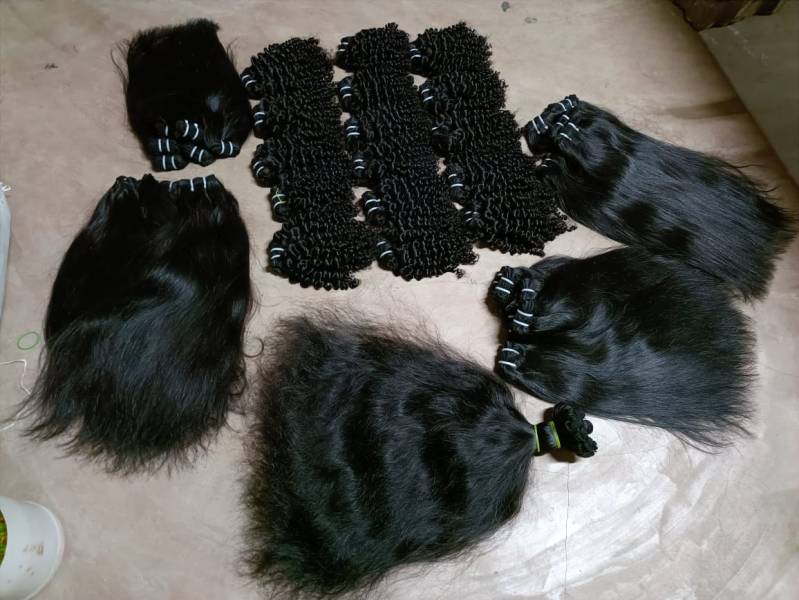
When shopping for hair extensions or wigs, the terms “raw,” “remy,” and “processed” often come up — but not everyone truly understands what they mean. At SAS Indian Hair, we believe that informed buyers make confident, lasting decisions. That’s why we’re breaking down the difference between raw Indian hair and processed hair, and explaining why raw hair is becoming the top choice for discerning salons, stylists, and global buyers.
Raw Indian hair refers to 100% natural, unprocessed human hair that has not undergone any chemical or steam treatments. It is:
Sourced ethically from temple donations across India
Collected with cuticles intact and aligned (Remy quality)
Free from silicone coating, acid wash, or dye
Maintains natural texture — straight, wavy, or curly
At SAS Indian Hair, we source our hair directly from South Indian temples, where people donate hair as part of a spiritual tradition. This gives us access to the purest, healthiest strands — and our clients notice the difference instantly.
Processed hair typically undergoes one or more of the following:
Chemical treatment to make it feel softer or shinier
Acid wash to remove the outer cuticle (which weakens hair)
Silicone coating to artificially smooth the texture
Color treatment to standardize shade
Often mixed from multiple donors or blended with synthetic fibers
The result? It may look good initially, but over time, processed hair loses luster, tangles more easily, and doesn’t last nearly as long as raw hair.
| Feature | Raw Indian Hair (SAS) | Processed Hair |
|---|---|---|
| Origin | Single donor, temple hair | Mixed donors, unknown origin |
| Chemical Treatment | None | Yes – acid, color, silicone |
| Longevity | 1–2+ years with care | 3–6 months average |
| Styling Flexibility | High – dye, curl, heat-safe | Limited – heat can damage |
| Natural Texture | Retained | Often altered artificially |
| Ethical Sourcing | Yes – SAS sources from temples | Often unclear or unethical |
As an emerging market leader in raw Indian hair, SAS Indian Hair is proud to offer:
100% raw, Remy temple hair with cuticle alignment
No synthetic blending, no shortcuts
Custom wig and extension orders with fast turnaround
A commitment to quality, ethics, and craftsmanship
We work directly with sorters and workers in India, ensuring every bundle or wig that leaves our facility meets international salon standards.
Though raw Indian hair may cost slightly more upfront, it delivers more natural movement, longer wear life, and better overall value. Processed hair may look appealing at first — but it’s a short-term solution for a long-term need.
When you choose SAS Indian Hair, you're not just buying hair — you're investing in authenticity, performance, and ethical beauty.
If you're a stylist, salon, reseller, or personal user, switching to raw Indian hair could elevate your brand and your customer experience.
At SAS Indian Hair, we’re proud to be the trusted source for premium quality, made-to-order human hair products worldwide.
Try the difference. Feel the difference.
📞 Contact us today to request a sample or learn about our wholesale options.
Website: www.sasindianhair.com
Instagram: @sasindianhair
Email: sasindianhair@gmail.com
#RawIndianHair #SASIndianHair #HairExtensionsGuide #RemyHair #VirginHairIndia #HairCareTips #EthicalHair #NaturalHairTexture